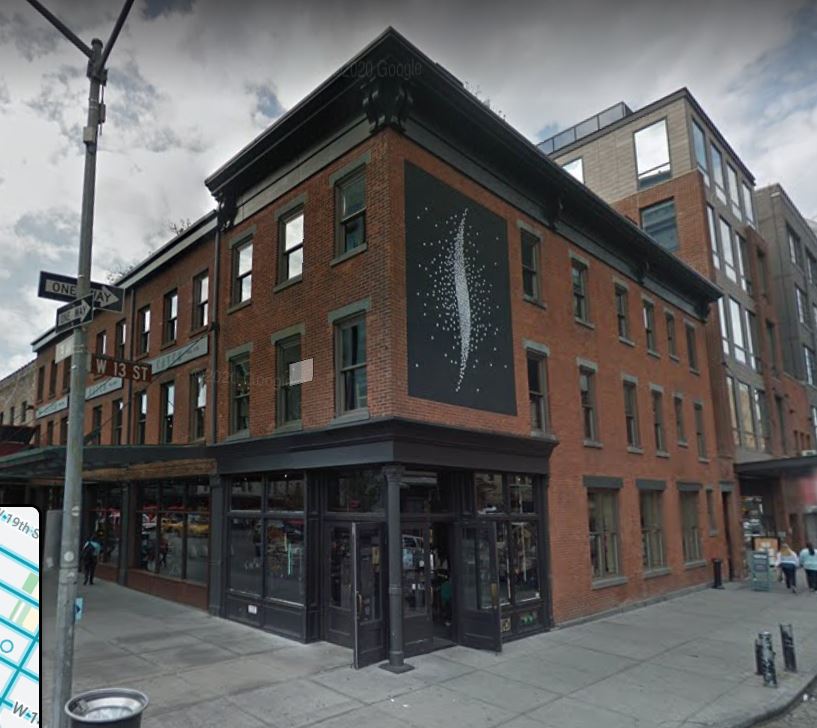Recording Pioneer Rob Mason’s Life on 12th Street
For more than a quarter century, Rob Mason (the subject of a recent Village Preservation Oral History) operated RPM Studios from his live/work loft at 12 East 12th Street, south of Union Square. RPM was one of the first boutique recording studios in the city during a golden age of music and recording here from 1976-2004.
Some of the greatest rock, hip hop, disco, jazz, and R&B artists of the late 20th and early 21st centuries recorded with Rob, who began his career in music as one of the first post-genre contemporary classical electronic composers. His studio has hosted huge stars such as the Rolling Stones, Led Zeppelin, David Bowie, Beastie Boys, Natalie Merchant, Vanessa Williams, and Lauryn Hill.

Rob became interested in music and composition watching live performances in the clubs of Greenwich Village when his father began bringing him to venues such as the Village Vanguard starting in 1953. That early exposure to live music had a huge impact on Rob.

He studied at Mannes School of Music, Columbia- Princeton Electronic Music Center, the Oberlin Conservatory, and Intermedia Department of New York University. By the early 1970s, he was performing his music at venues across the city, including small clubs in the Village such as the Bottom Line.

(Taorimina, Italy).
At one of Rob’s shows at Radio City Music Hall, where he was opening for Jefferson Starship, an intoxicated audience member snuck up and attempted to “merge with” Rob right there on stage, unceremoniously ending the show. He also played at the Hayden Planetarium, where he created an elaborate sky show with a cue list that he called out while playing his synthesizer with his band during the concerts.

An early adopter among musicians of live-work spaces, Mason converted many industrial spaces to accommodate synthesizers and serve as rehearsal spaces for electronic composers. At age 22, Rob built his first live-work loft in the Meatpacking District at 400 West 13th Street (in a building Village Preservation got landmarked in 2003), right on the corner of 13th Street and Ninth Avenue where his next-door neighbors were Rip Torn and Geraldine Page. Rob said, “And in those days it was a really wild, raunchy neighborhood packed with leather bars open only at night and during the day it was a fully functioning, bustling wholesale meatpacking district.”

When Rob moved to 12th Street, the loft hadn’t been rented for many years. There was extensive water damage, plaster and toxic paint was dropping from the ceilings, and there were no floorboards whatsoever. There was no electricity, so he had it installed. He needed to install floating reinforced concrete floors and thick, quadruple sheet rock ceiling hung from specially designed sound-isolating springs. The building had originally been built for newspaper printing presses, so it had no problems supporting the weight. Rob lived in the loft throughout the entire two-year construction process.

worked for Rob in the studio at the desk, as an assistant, gopher, or even an intern.
Rob intended to use the studio for his own music, but it became extremely popular with other recording artists and Rob grabbed the opportunity: “I quickly upgraded my equipment to the most state-of-the-art equipment available that was the best of its kind at the time. And before I knew it, I had Billy Joel and Paul Simon up here with the King of All Record Producers, Phil Ramone, who was known as the “Pope of Pop.” I had abruptly catapulted myself into the highest reaches of the recording world.”
From 1976 through 2004, when he closed the studio, Rob maintained his reputation by continuously upgrading and improving his studio and becoming a destination studio for many producers.
Click here to read the full transcript of Rob Mason’s oral history, or click here to listen to the full audio, as the stories here just scratch the surface of a fascinating oral history. Click here to help preserve this area south of Union Square.
Click here to explore the history of the area south of Union Square on our interactive map.
This is just one of over 60 oral histories compiled by Village Preservation as patrt of our Oral History Project. The project includes interviews with some of the great artists, activists, business owners, community leaders, and preservation pioneers of Greenwich Village, the East Village, and NoHo. It captures and preserves their first-person perspective on the important histories they witnessed or of which they were a part.
